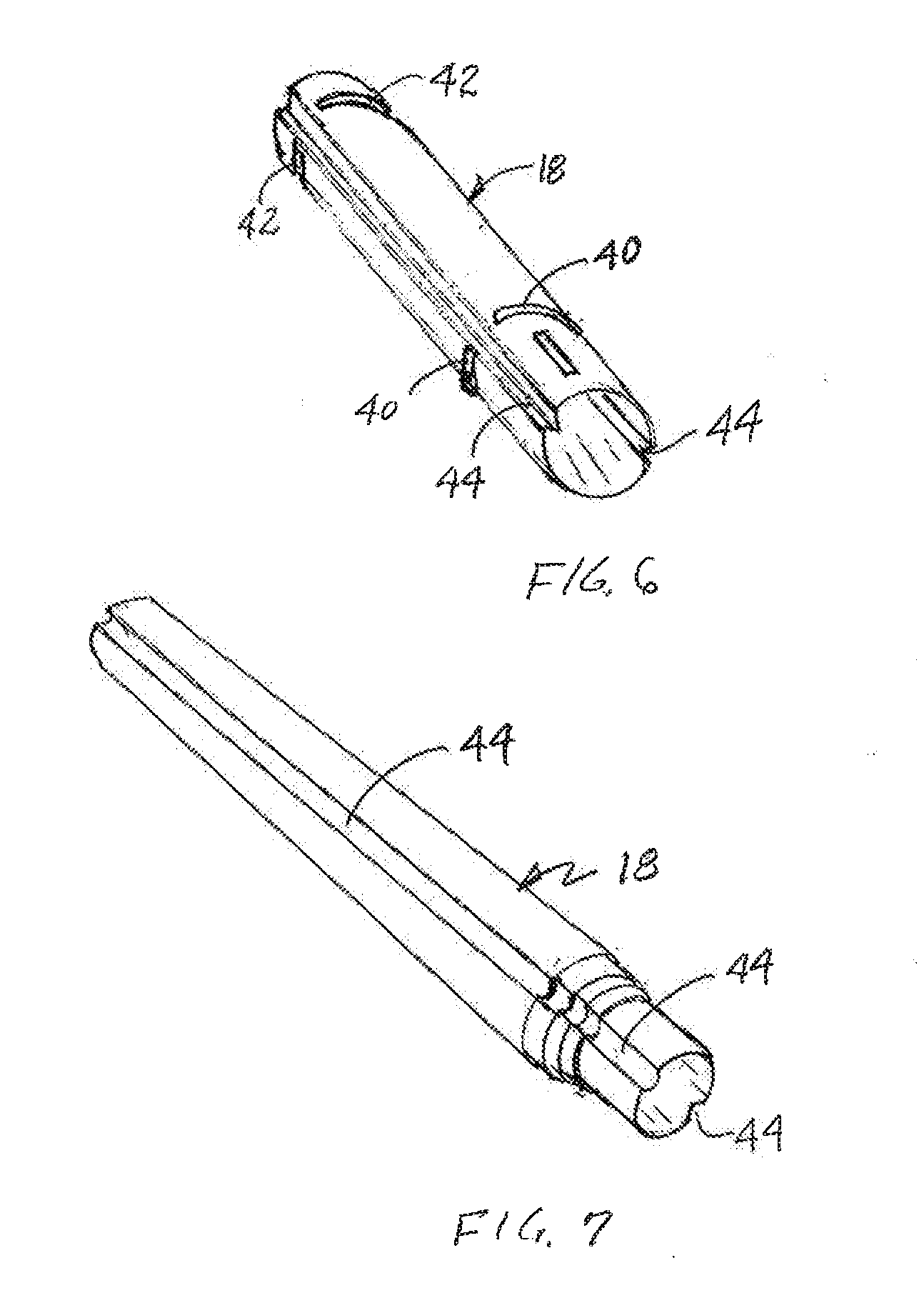Non-Rotatable Telescopic Handle Construction
a telescopic handle and non-rotatable technology, applied in the field of telescopic handles, can solve the problems of extending the telescopic handle with unnecessary force, exacerbated problems, and difficult implementation of cam locking structures, and achieve the effect of reducing the amount of flex in the handle and adding strength to the handl
- Summary
- Abstract
- Description
- Claims
- Application Information
AI Technical Summary
Benefits of technology
Problems solved by technology
Method used
Image
Examples
Embodiment Construction
[0020]Applicant has found that telescoping handles, when positioned in an extended state, could be made stiffer and avoid many of the bending problems associated with prior telescoping handles using a small stiffener, or plug, at the juncture of each joint of the retriever. The details of such a handle is shown and described in U.S. Pat. No. 7,073,228, the disclosure of which is hereby incorporated by reference. The present invention is an improvement over the invention of the '228 patent to further enhance stiffness of the extended telescoping handle and to reduce the chance of separation of the individuals segments of the handle.
[0021]Turning now to the drawings in general and in particular to FIGS. 1, 3 and 4, the invention will now be described in the context of a golf ball retriever having a handle 12 and grip 16 and comprising a plurality of telescoping segments or tubes 18, each of which has a sequentially smaller diameter and sequentially shorter length, and a ball grabbing ...
PUM
 Login to View More
Login to View More Abstract
Description
Claims
Application Information
 Login to View More
Login to View More - R&D
- Intellectual Property
- Life Sciences
- Materials
- Tech Scout
- Unparalleled Data Quality
- Higher Quality Content
- 60% Fewer Hallucinations
Browse by: Latest US Patents, China's latest patents, Technical Efficacy Thesaurus, Application Domain, Technology Topic, Popular Technical Reports.
© 2025 PatSnap. All rights reserved.Legal|Privacy policy|Modern Slavery Act Transparency Statement|Sitemap|About US| Contact US: help@patsnap.com



